How would you categorize the typical guests at a charity auction?
“In my experience, event guests fall into one of three different groups,” noted benefit auctioneer Renee Jones in a recent Winspire webinar. Her categories:
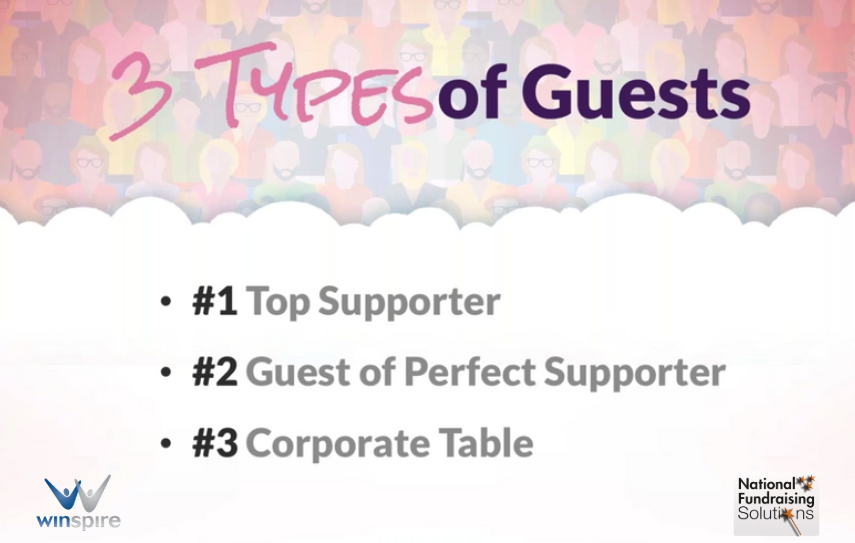
The trick to maximizing auction revenue is knowing how to develop each group – particularly the elusive Group 3. If you’re not careful, sponsored tables can fill your charity auction with guests simply there to enjoy the party, not support the event.
In today’s post, learn tips to reach out to each type of guest, plus the proven 4-step fundraising strategy that turns guests at sponsored tables into champions for your cause.
Group 1: Top Supporter
A top supporter is someone – perhaps a board member, former board member or former gala chair – who is already providing services to or benefiting from the nonprofit organization.
This is someone who is clearly vested. Top supporters have circled their wagons, raise money, participate and act as an extension of your organization. As Jones says: “They’re part of it 24/7, 3-6-5.”
Group 2: Guest of Top Supporter
The next type is guests of that perfect supporter. Perhaps your perfect supporter has purchased a table and is filling the remaining eight seats. These are people that may not know as much about your cause, but are in roughly the same demographic and financial position as our top supporter.
“This is a group that we really want to work to educate prior to their arrival,” Jones says. Here are two ways to do so.
✓ Tip: Empower top supporters to advocate on your behalf.
People in Group 2 typically don’t have a personal connection to the cause, Jones says, so they need to have a hand held as they start learning what makes your organization stand out.
Arm your top supporters with current statistics demonstrating impact. “It’s also very important to promote transparency,” Jones adds. “How can we show we are incredible stewards of the funds that we receive?”
An educational nonprofit, for example, might share materials that show how many students receive scholarships and the demographics of the student body.
“If top supporters are armed with information, it finds its way into everyday conversation as they’re talking about the event,” adds Ian Lauth, VP of Fundraising at Winspire. “Your big cheerleaders have those stats in their back pocket that they can use when inviting first-time guests. And at the event, everyone feels more enthusiastic to participate.”
✓ Tip: Meet with them personally before the event.
Depending on the interest level and availability of the top supporter’s friend, you may want to take them out to lunch or meet elsewhere face-to-face, bringing them into the vision and mission of the organization. It can also be a good idea to have your top supporter facilitate the meeting (“I’d also like to stress that the individuals that sometimes need the most new education or re-education is our top supporter,” Jones adds).
The goal is to supply enough information where both can advocate and feel comfortable the night of the event.
Meeting face-to-face is a surefire way to make a lasting impression on a new potential major donor and will certainly shape their experience at the event.
{{cta(’30b75717-a932-4b13-bb55-8fc2c1d62608′)}}
Group 3: Corporate Table
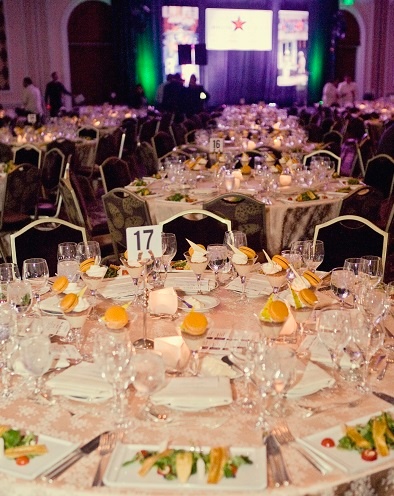
A corporate table could have the right people at the table… and it could just as easily not have the right people at the table. Since every table is valuable real estate at your event, you want to do all you can to minimize the likelihood of the latter outcome.
“With corporate donors, one of the things they often receive as part of their rewards package is a table, or more than one table, at the event,” Jones says. “Or perhaps at the sponsored table, there’s an honoree seated that is an active participant, maybe a top supporter of our organization.”
Unfortunately, the rest of the attendees at that table are likely not educated on the mission and vision of the organization. And as we’ve indicated above, confused and/or uneducated guests have come prepared to enjoy free food and entertainment, but not to give.
Fortunately, there are steps you can take to mitigate the risk (and minimize damage) of an unsupportive table.
 4 Steps to Develop Corporate Table Guests into Givers
4 Steps to Develop Corporate Table Guests into Givers
- Communicate expectations with sponsors upfront.
- Find out who’s coming.
- Conduct research on corporate table guests.
- Seat ‘dead’ tables strategically: away from the heart of the action.
⇨ Step 1: Set expectations with sponsors upfront regarding the value and ideal guests at each table.
The golden rule of managing sponsorships is to put yourself in the sponsors’ shoes. In this case, no sponsor wants to show up with empty seats.
We certainly empathize with the desire to fill them as fast as possible, but it doesn’t have to be this way. Give them time and encouragement to find the right guests.
“When you’re communicating with your corporate sponsors, make sure you share your expectations for that sponsorship table,” says Lauth. “Express your desire for qualified guests.”
“We don’t want to give the premier real estate in our ballroom, golf course tent or school gymnasium to people that are going to not be participating in the live ask and our higher-end activities of the evening,” adds Jones.
Benefit auctioneer Danny Hooper provided a brief example of a tactful way to clue those buying corporate tables in on the value of every seat:
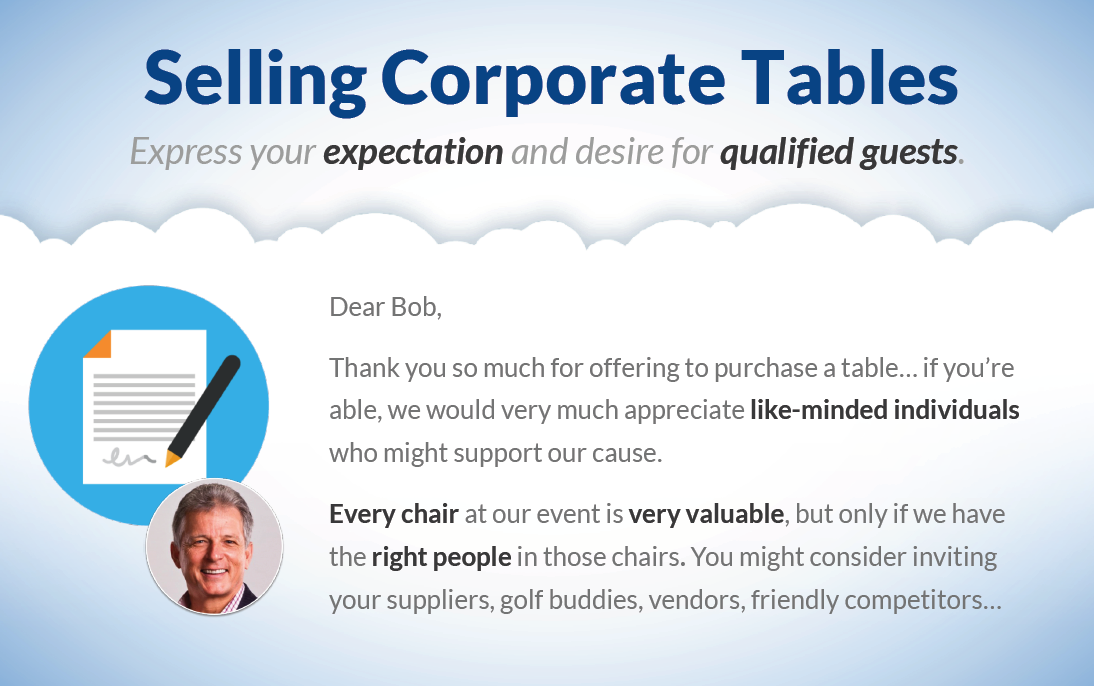
Respectfully encourage every sponsor to invite people who are of similar status and influence to fill those precious, limited seats.
⇨ Step 2: Find out who’s coming.
Once a table is agreed upon or sold, and after you’ve communicated your expectations, find out the names of who will be filling the seats.
Here is a great tip from Jones to incentivize eager participation and coordinate guests at corporate tables:
(Before I share this tip, let me mention I typically do not discuss techniques until we’ve reached the 100th event where we’ve conducted it and we’ve deemed it to be successful. Last Saturday night we had an event and it was our 100th time to do this and so we believe it’s proven it’s about 95% successful.)
Let’s say I buy a corporate table for a local fundraising event.
No matter what accounting or event software that nonprofit uses, the sponsored table almost certainly shows up under one main contact – say, ‘Renee Jones’ – and then ‘Renee Jones guest 1’ and then 2, 3, all the way through 10. As a result, I can expect someone from the nonprofit’s office to constantly harass me for weeks for more information on that table. It’s an unpleasant experience for all involved.
So what have we started doing instead?
Bribe your corporate table sponsors with a raffle. Tell them, if you submit all ten of your names by this date, you’re going to be put into a drawing the night of the event, and you could win this prize. Typically we just use a silent auction item and put that into a raffle drawing with everybody that turned in their table information.
Then, once we have their guest names, we create table tents with the guest names on them and we allow our VIP corporate table sponsored guests to arrive 30 minutes early. (If we have a 7:00 p.m. start, for example, we invite our VIPs to be there 6:00 to 6:30.) We allow them the opportunity to take their name tents and set their own table, in the seats they would like during the program.”
The top benefits of this strategy:
- It brings VIPs into the event sooner. A pre-event VIP reception brings more powerful and financial savvy people to the event sooner. It creates an immediate networking opportunity for them prior to the main guest arrival. And it gives high bidders an opportunity to set the bar on bids in the silent auction (if you’re not using mobile technology).
- It smoothes out the agenda. “What we’ve noticed from an operations standpoint with these two benefits, is that we are able to get our guests into the ballroom and seated typically 9 to 14 minutes faster. We start a program on time or even earlier because people know where they’re going to be seated; it’s more organized and less chaotic. People are organized in their seats and ready for the event program to continue so it’s very important.” {{cta(‘637a7a3d-6d30-4fe0-9be2-d2d0a049703b’)}}
- The earlier you (the nonprofit) get guest information, the sooner you can do data research. More on this important step next.
⇨ Step 3: Conduct research on sponsored table guests.

You want to find information that helps you estimate their financial abilities, their involvement in other organizations, and what it would take to show you need their support. The information you need is out there.
⇨ Step 4: Keep ‘dead’ tables away from the heart of the action.
So you’ve gotten you get the names, do research, and discover…the sponsored table is filled with support staff of a corporation or company.
At this point, “you should probably consider it a dead table,” asserts Jones. Avoid giving them the table right off of the dance floor that’s in direct sight of the MC and the auctioneer and all the fundraising activities. You’re better off moving that table to another area.
Click below to read more about auction seating and how to create a “triangle of influence” sitting in front of your auctioneer.
{{cta(‘f6ad9cdc-2605-4eb6-88dd-382ba8497c05’)}}
We also invite you to check out our recent webinar with iWave; Lauth shares more tips specifically addressing corporate tables around the 20:50 mark.
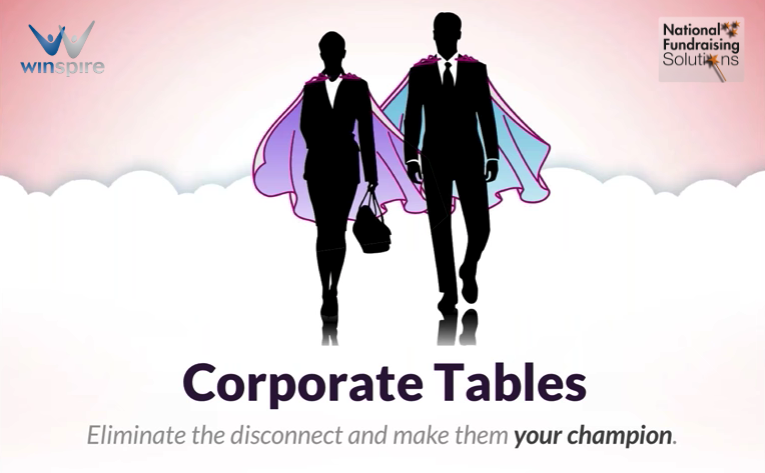
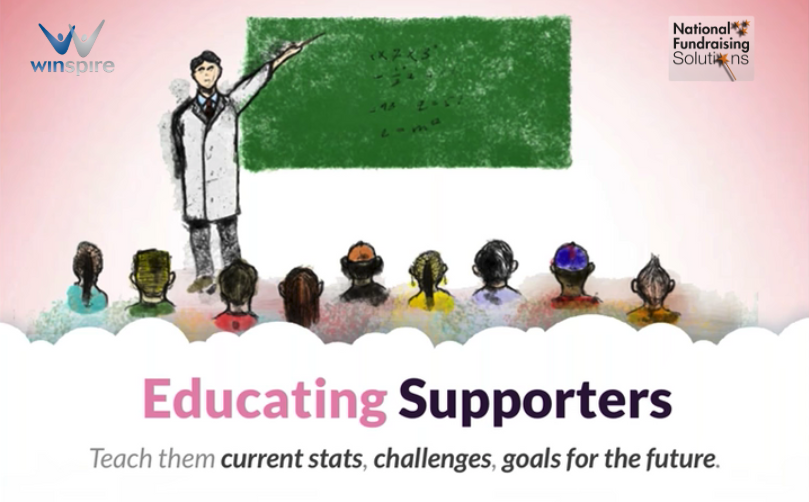
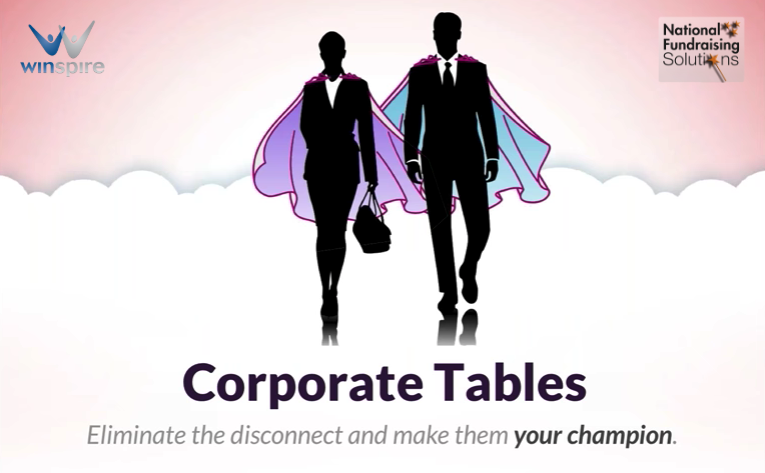
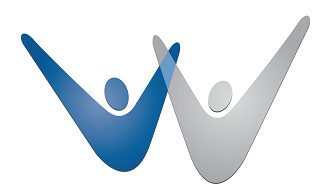 4 Steps to Develop Corporate Table Guests into Givers
4 Steps to Develop Corporate Table Guests into Givers